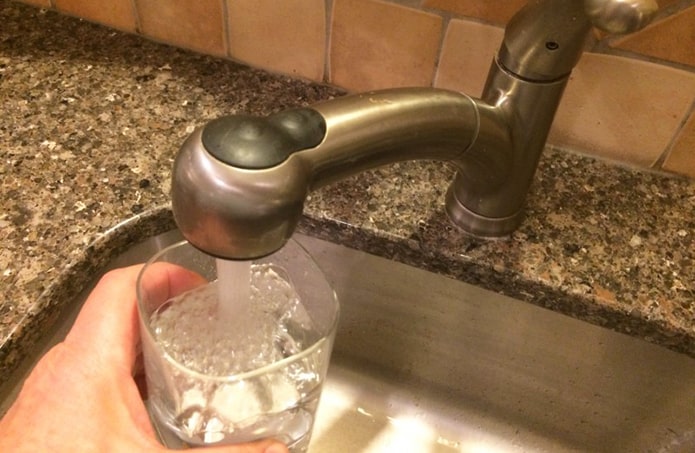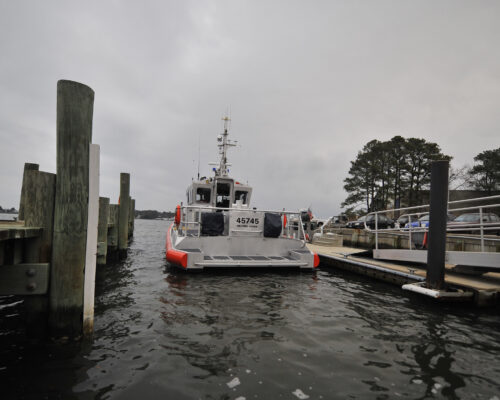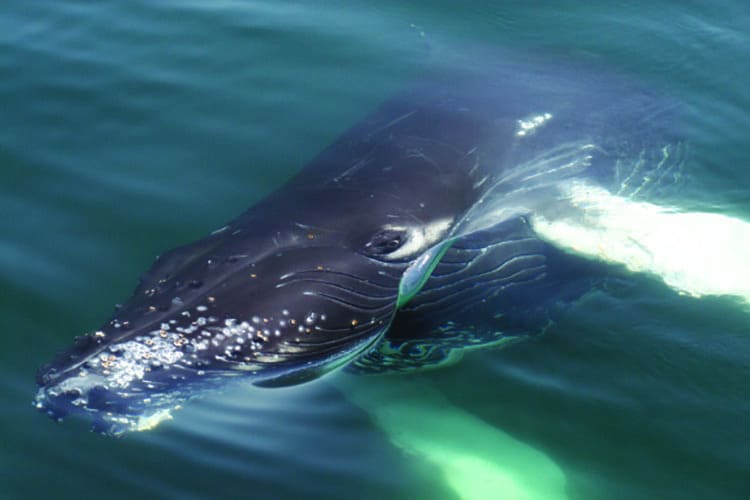By Timothy B. Wheeler, Bay Journal News Service
An environmental group is warning that more than 1,000 communities nationwide, including many in the Chesapeake Bay watershed, have nitrates in their drinking water at levels that recent research suggests could raise consumers’ risks of getting cancer.
Drawing on federal data, the Environmental Working Group contended in a report issued Tuesday that worrisome levels of nitrates, primarily from polluted farm runoff, contaminate the public water supplies of almost 1,700 communities nationwide. The group’s list of community water systems with potentially problematic nitrate levels included 188 in the six Bay watershed states, with 100 alone in Pennsylvania — though many are in portions of the states that fall outside of the watershed. The Bay states include Delaware, Maryland, New York, Pennsylvania, Virginia and West Virginia.
Under the federal Safe Drinking Water Act, the legal limit for nitrates in drinking water is 10 parts per million. That limit was set in 1962, the group noted, to guard against blue baby syndrome, a potentially fatal condition that deprives infants of oxygen if they ingest too much nitrate.
The nitrate concentrations reported by the community water systems listed in the report all meet the 10 ppm safe drinking water standard set by the U.S. Environmental Protection Agency. But the environmental group notes that there have been multiple studies in recent years linking an increased risk of cancer and other health effects with consumption of water containing lower levels of nitrates.
Since 2004, there have been more than 30 epidemiologic studies that evaluated nitrates in drinking water and the risk of cancer, adverse reproductive outcomes, or thyroid disease, according to a review published earlier this year. The review’s authors included two scientists with the National Cancer Institute.
“Many studies observed increased risk with ingestion of water nitrate levels that were below regulatory limits,” the review said. But it called for more research, concluding that “the number of well-designed studies of individual health outcomes is still too few to draw firm conclusions about risk from drinking water nitrate ingestion.”
Olga Naidenko, senior science adviser with the Environmental Working Group, said that based on the published research, her organization “sees a compelling case for elevated risk of cancer, especially colorectal cancer, for nitrate levels well below 10 ppm.” She said the group considers 5 ppm a provisional safety benchmark, though she noted that there had been a Danish study finding elevated risk above 1 ppm.
Most of the water systems containing 5–10 ppm of nitrate are very small, serving dozens or just a few hundred people in rural areas. But some serve thousands — the water system in Salisbury, MD, has 25,000 customers, according to data provided by EWG. The city’s 2016 water quality report listed 6 ppm of nitrate, with an annual range of 3.88 to 6.30 ppm.
Of the listed systems nationwide, about two-thirds, serving more than 3 million people in all, have no treatment systems to reduce nitrate concentrations to safer levels, the group reported. Installing treatment systems using ion exchange or reverse osmosis technology could cost hundreds or even thousands of dollars annually per customer for very small water systems, EWG said. It called instead for new efforts to prevent the contamination of groundwater with nitrates, which it said would be much less costly in the long run.
“Most of these nitrate levels are coming from fertilizer and manure,” said Anne Weir Schechinger, the report’s lead author, “so if we can stop some of that from getting into the water, we’re a lot less likely to have to even employ ion exchange.” Some of the same practices that help control runoff, including improved manure management, can also reduce the risk of nitrate contamination of groundwater.
Planting cover crops to keep nitrates from running off or soaking into groundwater would help, Schechinger said. The report noted that under the Farm Bill, the U.S. Department of Agriculture pays farmers to plant cover crops through the Conservation Stewardship Program and the Environmental Quality Incentives Program. But the group noted that almost 40 percent of the communities with more than 5 ppm nitrates in their water systems are in counties where no farmers have been paid to plant cover crops.
The EWG’s report urged redirecting such voluntary federal financial assistance to help those communities, but it also called for “mandated basic farm standards” that would require farmers to cut back on agricultural practices that pose the greatest risk of nitrate contamination.
Voluntary measures alone aren’t enough, the group argued. It cited the case of Edgerton, MN, where in the 1990s, the small city created a voluntary program to help farmers manage fertilizer and retire cropland. Nitrate levels in the water supply there declined, but when crop prices spiked in 2005, farmers resumed planting on land that had previously been set aside, and nitrate levels went up.
Though advocating mandatory farm conservation standards, Schechinger said they ought to be tailored to the needs and conditions of the region or community in question.
“We definitely don’t want to mandate one practice or suite of practices everywhere,” she said. “What would work in Iowa may not in Pennsylvania.”



